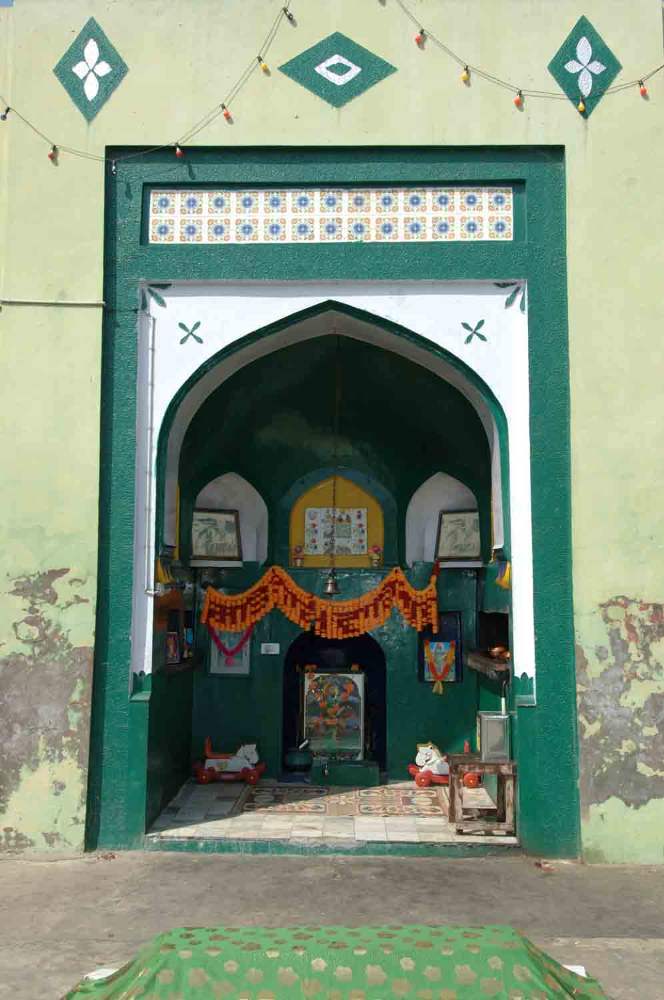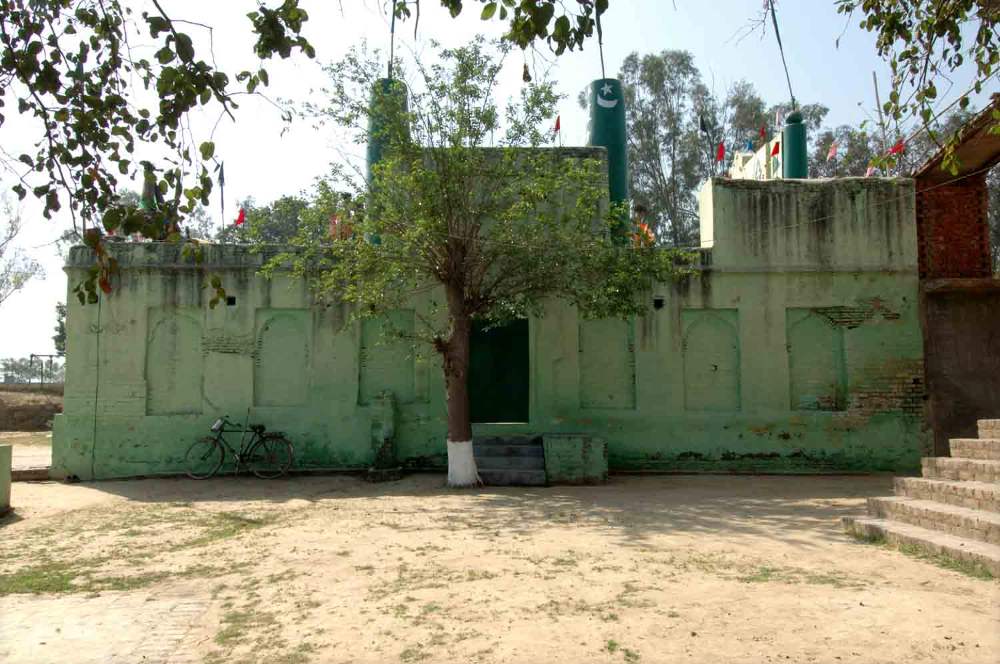


Located in the quiet village of Rajatal, Punjab, this abandoned mosque and graveyard offers a poignant glimpse into the past, standing as a relic of the Mughal era under Emperor Akbar. Built in the late 16th century, this mosque is a fine example of the architectural finesse and cultural depth of that time. Constructed with bricks and mortar, the mosque showcases traditional Mughal architecture, with its signature domes, arches, and symmetrical design. The entrance arch, visible in the image, is a defining feature, marked by geometric patterns and subtle ornamentation. The mosque’s southeast-facing orientation is symbolic of its alignment with Islamic traditions. The surrounding graveyard holds graves draped in green cloths, adding to the spiritual ambiance and reflecting Islamic funerary practices. Although abandoned, the mosque’s open compound and surrounding structures echo a once-thriving community of worshippers and scholars. The colorful flags and decorations seen in the image are likely part of local traditions that continue to honor the spiritual importance of the site, even in its current state of disrepair. Built during the reign of Akbar, this mosque would have served as a central place of worship and gathering for the local Muslim community in Rajatal. Its construction in the Mughal era reflects the rich cultural exchange and architectural innovations of that period. The abandonment of the mosque over time adds a layer of historical mystery, as it quietly ages amidst the serene landscape of Punjab. The abandoned mosque and graveyard in Rajatal are not just remnants of the Mughal era but silent storytellers of a time gone by. For those with an appreciation for art, architecture, and history, this site provides a unique window into Punjab’s Islamic heritage. Despite its abandonment, the mosque’s resilient structure and the vibrant graves remind us of the lasting spiritual and cultural imprint left by its creators.